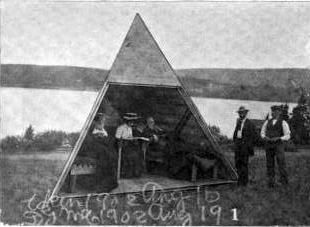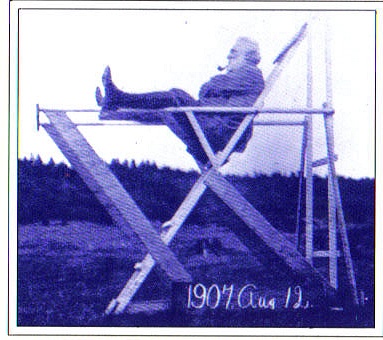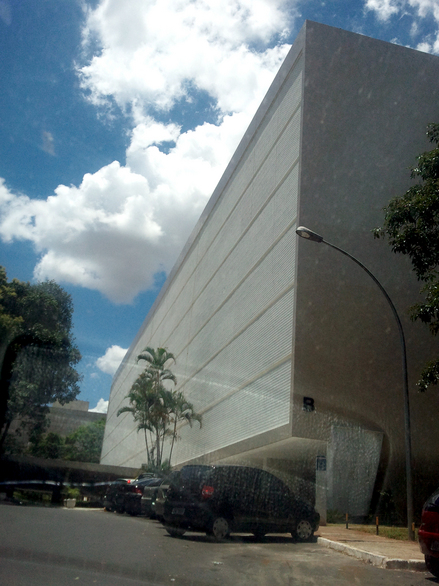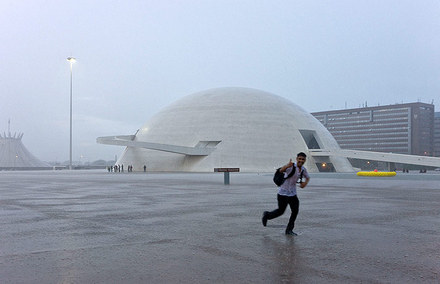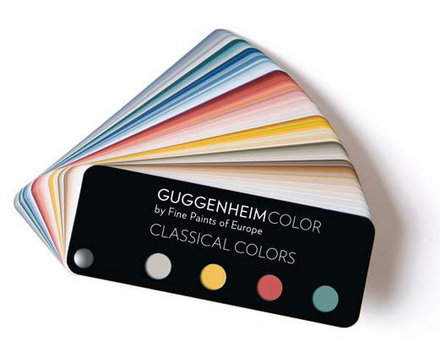TROPOLISM
Thursday, 1 December 2011
Tetra-Shed, The Useable Shed
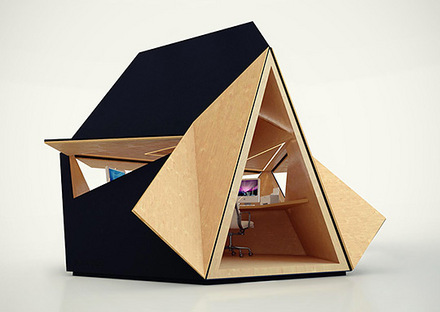 Tetra-Shed: new awesome design object that seems perfectly designed for press release, without ever giving you a sense of it being completely real. It's a black Tony Smith sculpture to please the art crowd. It's functional! yet stylish for all that garden computing you do, for the Wallpaper/Dwell subscribers. It's modular! for the architects. It's manly and expensive for the GQ/Gilt Group followers. And, it's coming out in the near future for some undisclosed sum, for those of us who find it amusing, absurd, and who are going to forget all about it tomorrow.
Tetra-Shed: new awesome design object that seems perfectly designed for press release, without ever giving you a sense of it being completely real. It's a black Tony Smith sculpture to please the art crowd. It's functional! yet stylish for all that garden computing you do, for the Wallpaper/Dwell subscribers. It's modular! for the architects. It's manly and expensive for the GQ/Gilt Group followers. And, it's coming out in the near future for some undisclosed sum, for those of us who find it amusing, absurd, and who are going to forget all about it tomorrow.
Favorite part of the website: its uses are a range of applications (meaning we'll build these for anyone who pays) like classrooms, exhibition space (because a sitting down at a computer is totally the same environment as an exhibition), corporate events (it's a step up for those so kinda can't argue with that one), tourism and leisure facilities (like a pool or tennis court? do tell), and retail space. Which this is all perfectly suited for.
Tropolism Books: Lucio Costa: Brasilia's Superquadra
Author: Fares El-Dahdah
Publication Date: February 2005
Publisher: Prestel Publishing
Speaking of Brasilia, one of the amazing books to come across my desk this year was the not-new-but-still-excellent Lucio Costa: Brasilia's Superquadra. The book is part of The Harvard Design School's also-excellent CASE series. Composed of ten essays about Lucio Costa's design for Brasilia, and how the resulting city has evolved since the majority of it was built. The essays, starting with an excellent interview with Costa himself, focuses on the specific, unique character of Brasilia. Costa sums it up well:
In a normal city, urbanism's objective is to create conditions that allow a city to sprout like a plant, unlike Brasilia, which is a product of reason imposed by an act of will that occurred with the expressed objective of transferring the country's captial. The intention was to create a city that had a pleasant way of life, yet remained truly administrative with its own characteristics well defined, meaningful.
By focusing on the Superquadra, Costa's brilliantly devised solution to residential living in Brasilia, the reader enters into the life of the city, and the uniqueness of its organization. The Superquadra are composed of housing blocks, and at its edges are commercial strips and public buildings. The aggregation of these building blocks works, and works well, creating a modern city that is unlike any other. Having just visited said Superquadra, I was struck by how well this book captures the very special nature of these neighborhood units. The housing blocks, suspended above the ground, leave the ground floor almost entirely open. The result is wonderful: one is truly moving through a park full of residential buildings. Some of the newer blocks compromise this aspect but overall the city is as intended. The essays do a good job of delineating this evolution, and the laws supporting them.
As a case study in how an entirely new urban idea evolved and played out, this book is valuable. Everything from the shape of the buildings to the politics underlying them, to the way laws shape buildings is captured here. Because Brasilia is so young, and is an entirely designed city, it is a good subject for this kind of case study: micro adjustments in code alter the buildings that go up immediately after. For those interested in diving into some good urban design reading, as well as those who love Brazil and Brasilia, or those who study city design, this book is a must.
Wednesday, 30 November 2011
Tropolism Books: Brasilia-Chandigarh: Living With Modernity
Author: Iwan Baan
Publication Date: August 2010
Publisher: Lars Muller
ISBN: 978-3037782286
Brasilia-Chandigarh: Living With Modernity is an enchanting book about the daily city life of these two great Twentieth Century capitals. Both cities share common architectural attributes, stemming from their common early-Modernism DNA: the plasticity of concrete, the deep thinking about how to assemble the various aspects city, the ambition (and realization) of building an ideal city in the face of the impossibility of the task. Each spread is a single photograph, and each spread is a world of lives unto itself. The first half is devoted to Brasilia, the second Chandigarh. Iwan Baan captures the city through his watchful camera, and his technique of having people engage (or try to ignore) his camera is a brilliant one: it connects the reader of this book to the city life he is documenting.
From the essay by Cees Nooteboom situated between the two halves of the book (and speaking about Brasilia):
Even then, only around ten years after the construction, the tropics had done their work, and human beings had inserted themselves between the design and the practice. To be clear, perhaps you could put it this way: architectural sketches are always silent, whereas cities never are. It is not drawings that live in cities, but people, unpredictable individuals who might at any moment disturb the order that has been designed for them, who may break through the silence of the sketches by making use of that unique instrument that makes a city a city: the human voice.
Having
visited one of these cities this year, I found myself transported back to Brazil. Brasilia is beautiful, shining, and entirely unexpected. In the areas I wanted it to be great, it was not. Yet it was great in areas I did not expect, or did not even know to expect: because so much of it is unlike any city anywhere, it felt continually new, without feeling oppressive or alienating. Iwan Baan's photographs are like that feeling. They are inviting, unexpected, and evergreen.
Advertisement
Support our advertisers because they help keep the content free.
If you're interested in advertising, contact
us.
New York 101, 2011
We were nominated for something whilst we were travelling in Mexico on our honeymoon. You could have voted for us! Or something.

Thursday, 13 October 2011
Guggenheim Museum Licenses Colors; Towel Bars and TP Holders Coming In 2012
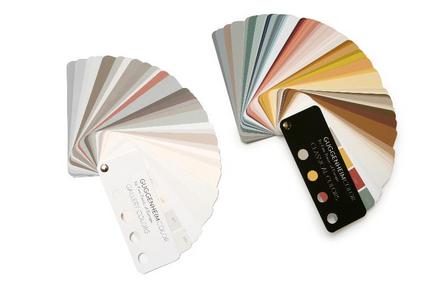
Qualifying for most hilarious licensing deal of the month, The Guggenheim Museum in New York is
licensing paint colors. It's a natural, from a focus group viewpoint. Think about it. Museums have both paint-
ings and they also
paint their walls. Sometimes in non-white colors! So they took colors from famous/old paintings to create a fan deck that looks like, well, like most paint fan decks, except with fewer true greens and oranges.
Don't get me wrong, I love me some creative licensing. Frankly I don't care if it's off-mission or off-brand or off-message or whatever constructions end up limiting original thinking. But if you're going to go off-road with your product, it should at least rock the party microphone. These colors are very, very nice! But are the hues really any different than just picking the same color chips from
other fine paint company's existing palettes? And are the colors really unique to Guggenheim? If Fine Paints Of Europe (whose paints rock, by the way) did this with a Cezanne in MoMA wouldn't the end result be the same? The product looks nice, but the branding feels flat.
My favorite part of the press release:
Character Approved's Architecture Expert: Chad Smith
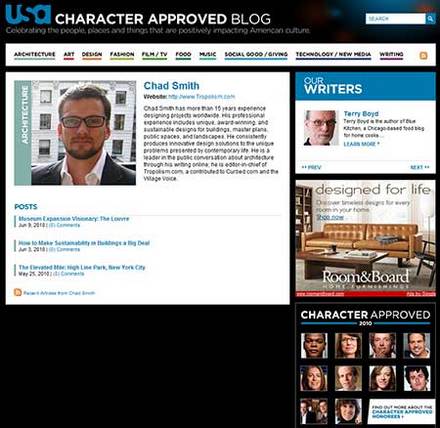
If it seems like the posting frequency has gone down a tad the last few months, that's because it has! I am also writing for
USA Network's Character Approved Blog, which assembles experts in various cultural fields to talk about what we think is positively impacting the cultural landscape. I am the architecture expert. I mean, who else would they pick? Joke. I was honored to be asked.
Visit often. I'll twitter a link when the articles I've written go live there.
 Tetra-Shed: new awesome design object that seems perfectly designed for press release, without ever giving you a sense of it being completely real. It's a black Tony Smith sculpture to please the art crowd. It's functional! yet stylish for all that garden computing you do, for the Wallpaper/Dwell subscribers. It's modular! for the architects. It's manly and expensive for the GQ/Gilt Group followers. And, it's coming out in the near future for some undisclosed sum, for those of us who find it amusing, absurd, and who are going to forget all about it tomorrow.
Tetra-Shed: new awesome design object that seems perfectly designed for press release, without ever giving you a sense of it being completely real. It's a black Tony Smith sculpture to please the art crowd. It's functional! yet stylish for all that garden computing you do, for the Wallpaper/Dwell subscribers. It's modular! for the architects. It's manly and expensive for the GQ/Gilt Group followers. And, it's coming out in the near future for some undisclosed sum, for those of us who find it amusing, absurd, and who are going to forget all about it tomorrow. 